Third Graders Have Epic Field Trip Thanks to Discover the Outdoors Grant
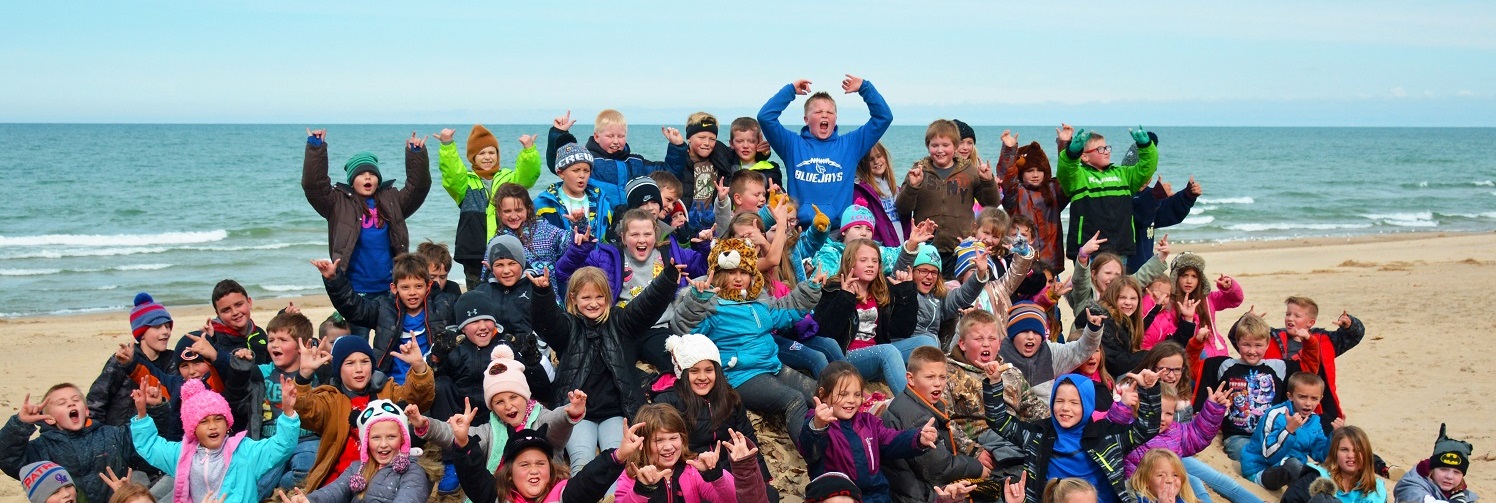
Miss Frizzle on the children’s TV program “The Magic School Bus” took her classroom on a field trip practically every day. A teacher in real life would probably wonder how Miss Frizzle handled permission slips when excursions included things like shrinking the children to microscopic sizes. Also, how did Miss Frizzle’s fictional classroom afford so many adventures? Most school budgets do not allot much in the realm of school trips, so families are often asked to contribute to their student’s costs. Obviously, “The Magic School Bus” is a fictional tool to teach kids about science. In the real world, getting hands on experience in nature can be costly, and funding programs are needed to help kids experience learning outside of the classroom.
That is why the Indiana Natural Resources Foundation raises funds for the Discover the Outdoors field trip grant program. Discover the Outdoors, offered in partnership with Indiana State Parks, encourages public, private, parochial and home school educators to engage students on field trips to an Indiana state park or reservoir. Educators work directly with park staff to develop a curriculum that benefits each student. The naturalists lead students on adventures to explore nature centers, caves, forests, rivers, lakes and other unique natural and cultural areas throughout Indiana.
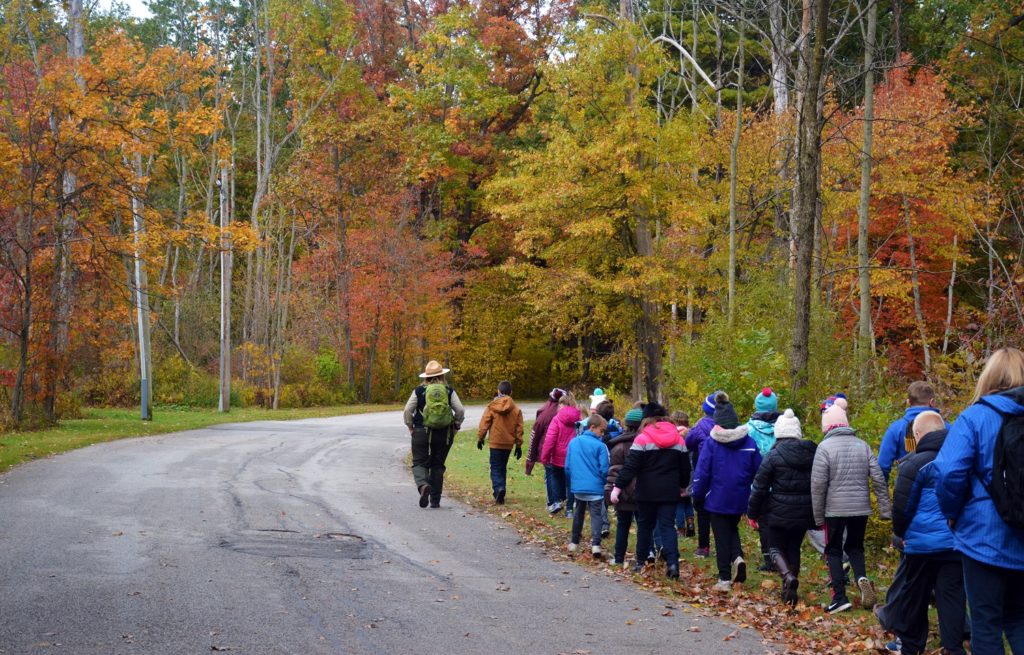
Rae French, educator at North Judson-San Pierre Elementary School in northwestern Indiana, applied for and received the Discover the Outdoors grant. French was able to send her third grade students, along with those from two other classes, on a trip to Indiana Dunes State Park in October 2019. Many of the students saw Lake Michigan and the dunes for the first time.
“This grant allowed a unique opportunity to the third graders of North Judson-San Pierre Elementary,” said French. “Fifty-five percent of the students that attend NJSP qualify for free or reduced lunch. Some of the students rarely have had the chance to get out of Starke County. The school district encourages field trips, but the third grade trips, up to this point, have been to places in Starke and Pulaski counties. This grant provided a monetary means for the students to travel out of their home community and embark on new experiences that they otherwise may never have had.”
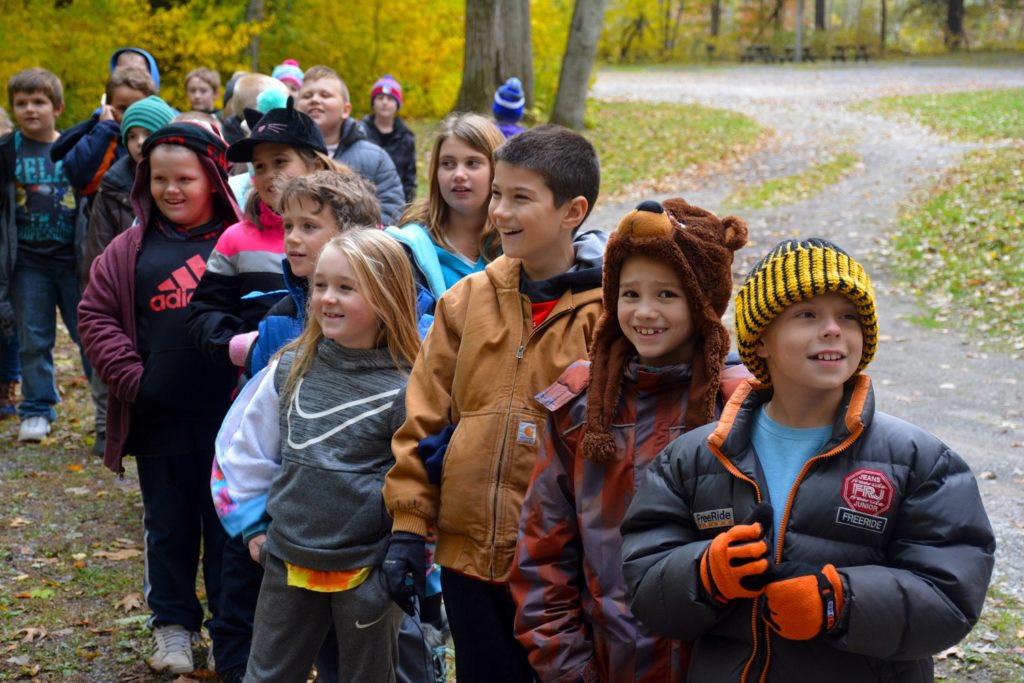
The day consisted of a local nature talk, a hike through the park, scavenger hunt in the nature center, and a picnic of sack lunches, and it concluded with an exhilarating run up the dunes at Lake Michigan.
During the nature talk, third graders learned about wildlife local to the dunes. They looked in awe at a box turtle up close. They expressed disgust at the sight of a jar full of lampreys, nicknamed the vampires of the Great Lakes. “I saw in the movies they were sucking on the bottom of the boats and sinking them,” said one of the boys. They excitedly lined up to take turns touching a live black snake. After seeing the black snake up close and touching its scales, one girl said, “That was the best experience of my life!”
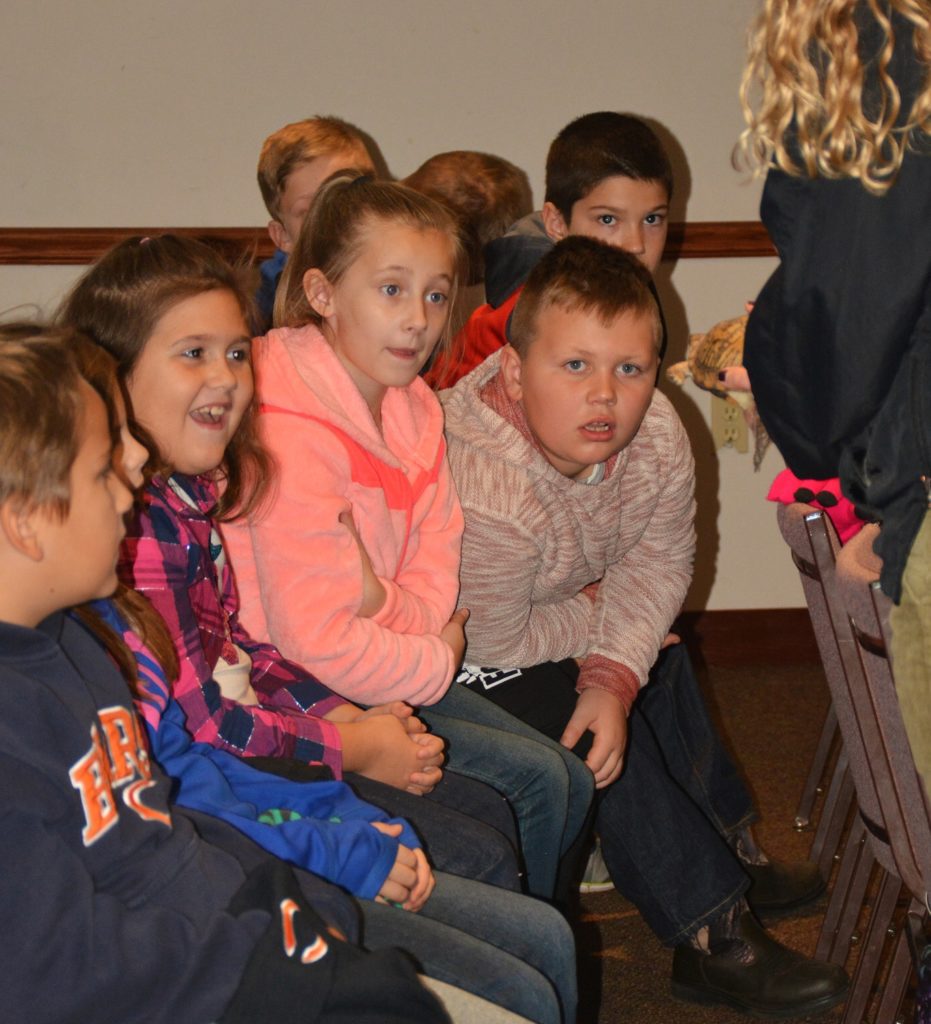
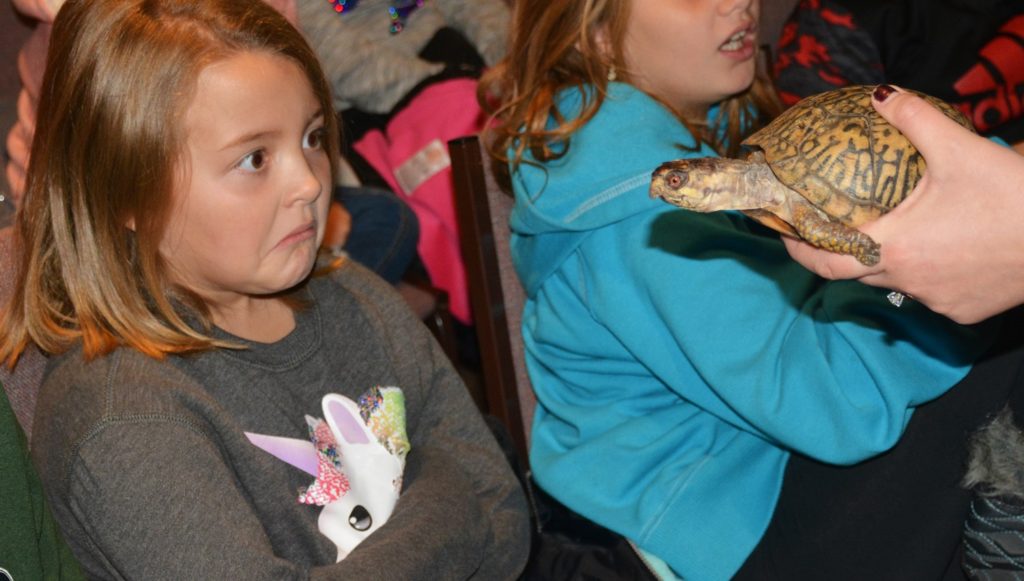
The hike was led by Marie Laudeman, interpretive naturalist at Indiana Dunes State Park. The kids observed everything around them. The vibrant autumn leaves provided a backdrop as Laudeman pointed out different species of plants and wildlife to the kids. She led them across the boardwalk over the marsh area and asked them questions about what they thought might live beneath the waters and along the banks.
Indiana Dunes State Park is rich in biodiversity because it converges at the edge of several ecosystems: prairie, deciduous forest and wetlands. As a result, species diversity is extremely high, and Indiana Dunes has the highest number of listed species of any Indiana State Park. The third graders soaked up all of the information about the park. They often raised their hands and asked about where the animals lived and what they ate, and they spotted several creatures along the hike.
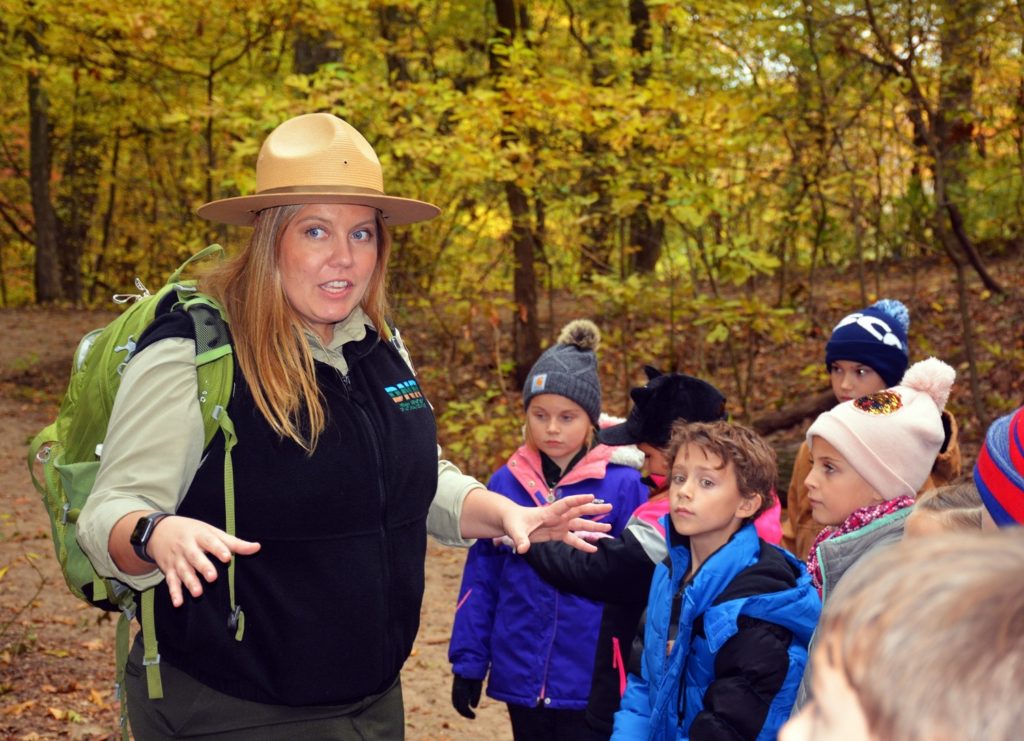
Many children said this was their first hike and first visit to a state park. Throughout the day, not one student asked to go back indoors or looked at a streaming device. They listened intently as Laudeman explained things like how root beer is made from the sarsaparilla root. They smelled the leaves of a sarsaparilla tree and then a bottle of root beer, making the connection between the two. One student said to another, “That’s gross it’s made from roots.” Her friend pointed out that carrots and potatoes are roots – an astute observation from a 10 year-old. The students made connections between the natural resources around them and the products they consume or use back home.
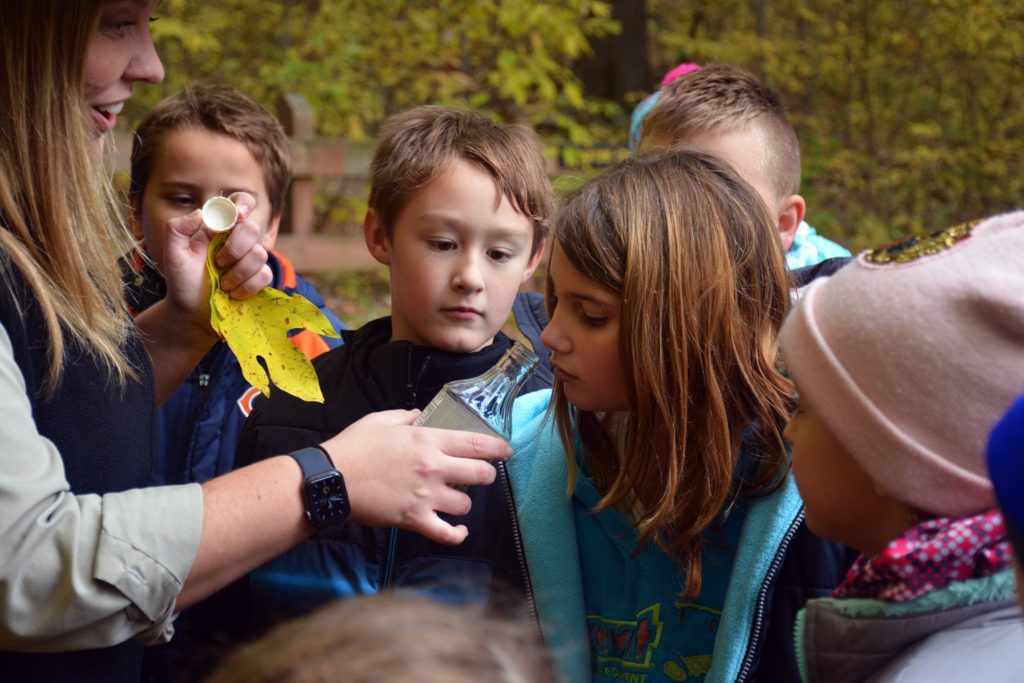
After enjoying sack lunches on picnic tables, the buses loaded and headed five minutes down the road toward the shores of Lake Michigan. The kids buzzed with excitement. They obediently filed out of the bus and followed their teachers onto the sand. Once they saw the 200-foot high dunes and were given the go ahead to run, they ran up the mountains of soft sand and tumbled down, ran back up and tumbled down – smiling and laughing, rosy-cheeked in the chilly lake wind. Some pointed to the faint outline of skyscrapers off in the distance. “That’s Chicago! It’s my first time seeing Chicago.”
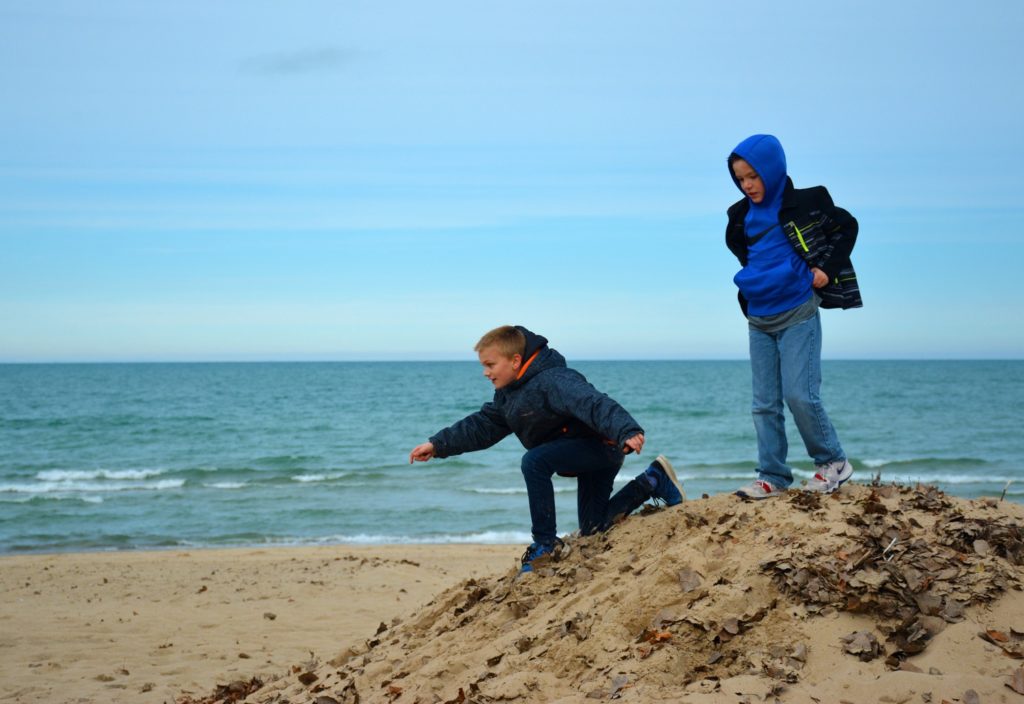
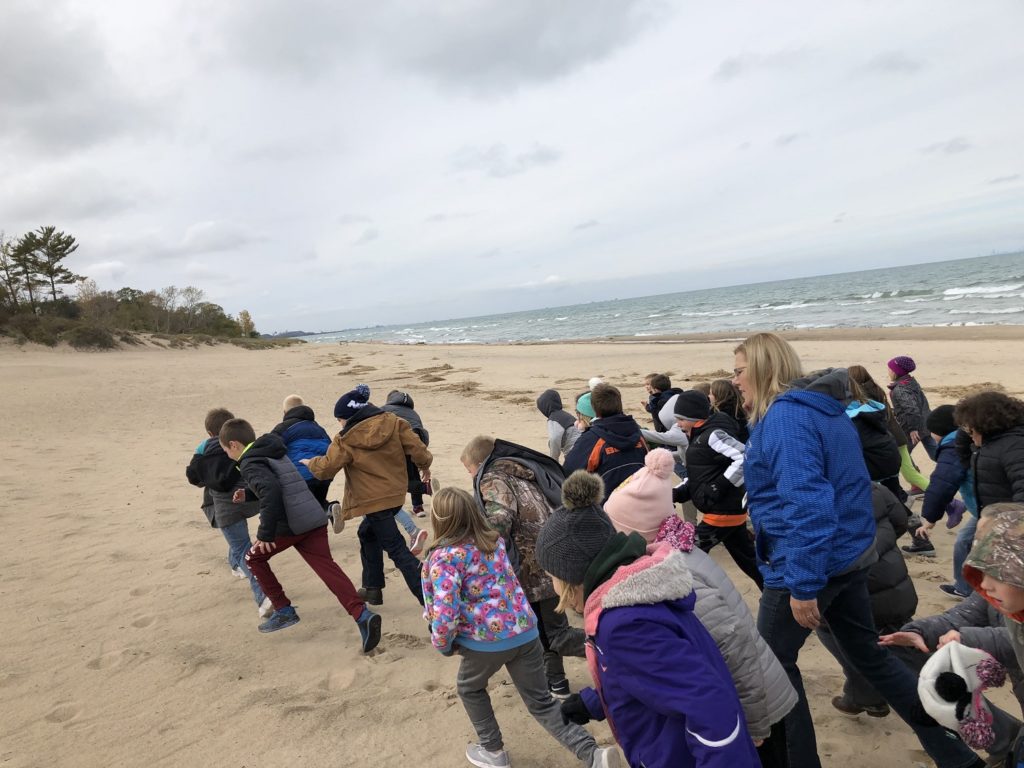
After shaking as much sand out of their boots as they could, the kids climbed back onto the buses and headed for home. French said during the ride home, “The kids were on a natural high. They were very talkative, excited and tired. Some of the comments I heard were ‘This trip was the best day of my life,’ ‘Can we go there again,’ ‘I have sand in my shoes. I’m going to take it home as a souvenir,’ ‘I liked this field trip better than our other field trip,’ and ‘I’m going to ask my mom to bring me to the dunes.’ ”
“I think spending time outdoors impacts today’s learners by making students more active and aware of their surroundings,” said French. “Outdoor learning provides students with hands-on experience in nature. Most children learn better by using their senses. The outdoor environment provides a perfect place to do this. Instead of viewing different types of plants or wildlife in a book or on an electronic device, they can see, smell, hear and touch nature first hand.”
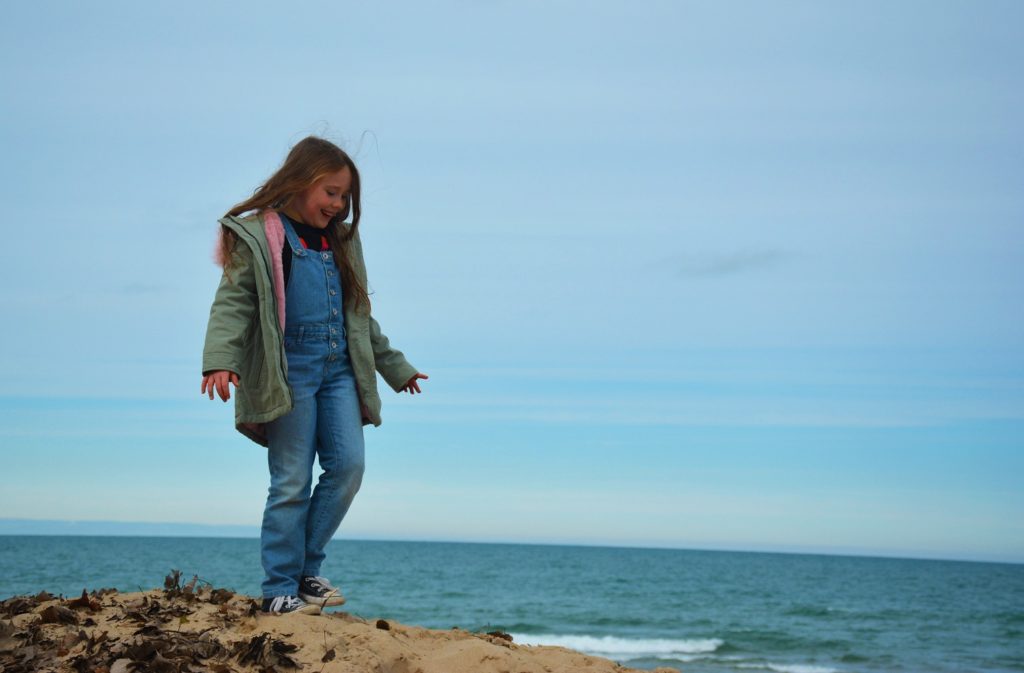
The magic that day was not in a mythical school bus that could go anywhere and do anything. It was in the wonder in each child’s expression as they made new discoveries and connections with the real world they live in. Perhaps that field trip will inspire the third graders at NJSP to become future conservationists and see the value in protecting ecosystems.
The Discover the Outdoors grant has provided outdoor field trip opportunities to more than 200 schools in Indiana. If you want to contribute to the field trip grant program, please consider making a donation. If you are a teacher interested in applying for a field trip grant, you can learn how here. Grant applications are accepted May 1- June 30 each year for the upcoming academic year.
